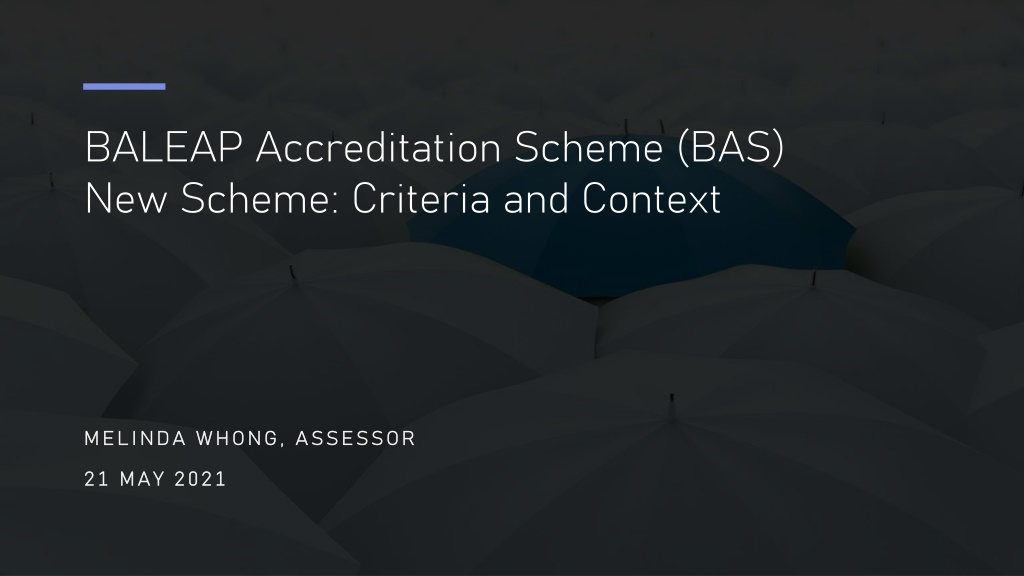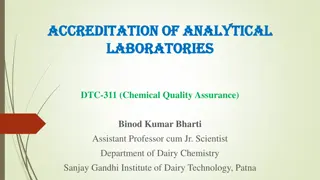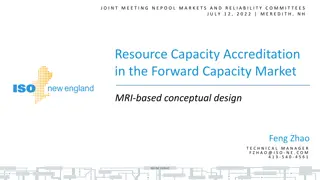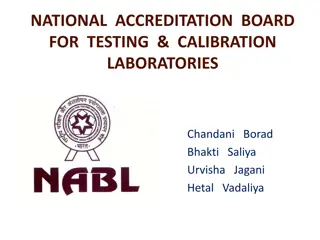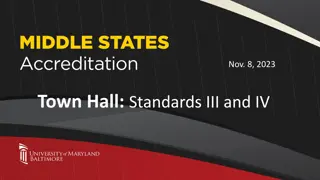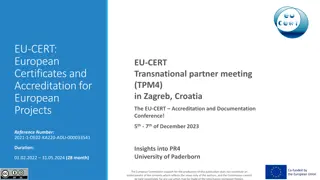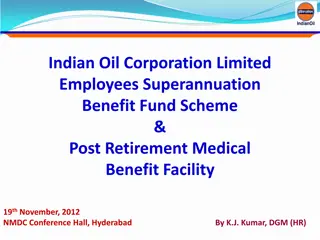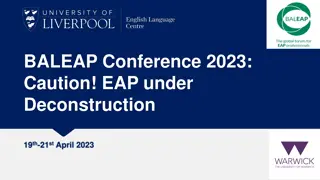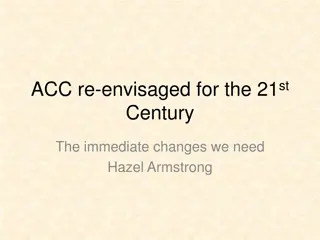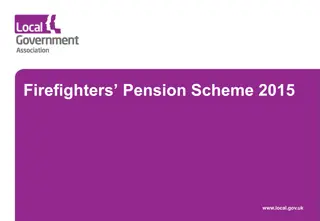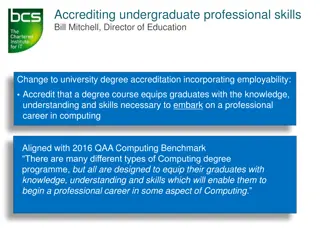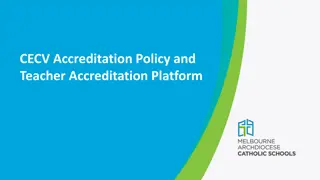Evolution of BALEAP Accreditation Scheme: Criteria and Context
The evolution of the BALEAP Accreditation Scheme (BAS) over the years from its inception in 1991 to the modifications made in 2012 is documented. Initially focused on accrediting language centers, the scheme expanded to embrace EAP in higher education. Changes in criteria and structure reflect the shift towards discipline-specific Pre-Sessional programs and inclusion of external review systems. The adaptation of BAS highlights the dynamic nature of English language teaching and assessment in academic settings.
Download Presentation

Please find below an Image/Link to download the presentation.
The content on the website is provided AS IS for your information and personal use only. It may not be sold, licensed, or shared on other websites without obtaining consent from the author. Download presentation by click this link. If you encounter any issues during the download, it is possible that the publisher has removed the file from their server.
E N D
Presentation Transcript
BALEAP Accreditation Scheme (BAS) New Scheme: Criteria and Context MELINDA WHONG, ASSESSOR MELINDA WHONG, ASSESSOR 21 MAY 2021 21 MAY 2021
BALEAP Accreditation Scheme Context / History i. Revised Scheme ii.
in the early days in the early days 1991 BAS began accreditations
in the early days in the early days 1991 BAS began accreditations
in the early days in the early days 1991 BAS began accreditations 1990s to 2005(-ish) Nature of language centres included General English programmes Teacher training of English teachers from abroad alongside academic English (summer Pre-Sessionals) EAP: grounded in ESP/Applied Linguistics
from around 2005 from around 2005 Considerable growth of international students large Pre-Sessionals Pre-Sessional more the main event in English language centres Move to more discipline specific Pre-S (more than Business English) Structurally Question: central service or academic unit Private providers
Scheme at that time Scheme at that time 8 Sections and 81 Criteria 8 Sections and 81 Criteria Management and Administration (22) Management and Administration (22) Staffing (9) Staffing (9) Resources and Facilities (9) Resources and Facilities (9) Course Design (8) Course Design (8) Teaching and Learning (13) Teaching and Learning (13) Assessment (7) Assessment (7) Student Welfare (9) Student Welfare (9) Evaluation (4) Evaluation (4)
BAS in 2012 BAS in 2012 May Assessors meeting: Need to modify Scheme agreed Modification because: too language school /ELT oriented remit is EAP HE-appropriate: external examiner/external review systems Survey with institutional members Working Group set up
2014 Changes 2014 Changes 8 Sections and 81 Criteria Management and Administration (22) Management and Administration (22) Staffing (9) Staffing (9) Resources and Facilities (9) Resources and Facilities (9) Course Design (8) Teaching and Learning (13) Assessment (7) Assessment (7) Student Welfare (9) Student Welfare (9) Evaluation (4) Evaluation (4) Reduced to Reduced to 5 Categories and 44 Criteria 5 Categories and 44 Criteria Institutional Context (8) Institutional Context (8) Course Management (8) Course Management (8) Course Design (9) Learning and Teaching (9) Assessment, Evaluation and Assessment, Evaluation and Progression (10) Progression (10)
However, challenges remained Within the Scheme itself a product of modifying what exists (significant tweaking) overlap and lack of clarity between criteria
Since 2012/2014 Change in Context private providers: EAP practitioners teaching students EAP importance of international students growth/development of In-Sessional growth of transnational education / branch campuses abroad BALEAP as a Global Forum
Different approach Needed thinking from core principles Global Forum: large implications (Scheme: very Pre-Sessional oriented)
Revised Scheme Goes further . Not: about office space, liaising with accommodation for start of course exclusively only a unit within a university The course/curriculum/content: The heart of what we do
Revised Scheme: Core Principles EAP: language as a content (genre-based) EAP pedagogy, beyond CLT-driven ELT EAP is inherently contextualised (for academic purpose)
New Criteria Two Sections Leadership and Administration I. II. Programme: Content, Delivery and Assessment Ten Criteria each = 20 Total Criteria
For Academic Purposes What purpose? Whose purpose? i.e. Context Dependent UK Pre-Sessional AND In-Sessional Within Universities and Private Providers Beyond the UK English Medium of Instruction: Turkey, Hong Kong, China, Spain, Singapore, Japan .
Central to New Scheme: The Accreditation Context Accreditation Context document A. A. Contextualising Contextualising your EAP Provision your EAP Provision including: what your priorities are as a Centre B. B. Collaborations, Influence and Impact Collaborations, Influence and Impact C. C. Principles Principles underlying YOUR approach to teaching, assessment, EAP D. D. Developments to Date Developments to Date (For Units seeking re-accreditation) E. E. Essentials for the BAS Assessors Essentials for the BAS Assessors size, time of year
What hasnt changed Ethos: Developmental a Peer scheme Priority: Quality education for students
Finally: The New Normal We live in a world of change, sometimes rapid change A more nimble Accreditation Scheme that will allow us to facilitate the important work that we do
Finally: The New Normal We live in a world of change, sometimes rapid change A more nimble Accreditation Scheme that will allow us to facilitate the important work that we do
Thank you for coming to our 30 Thank you for coming to our 30th th
